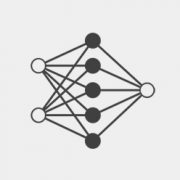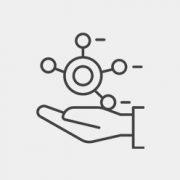We are developing multiple AI solutions to reduce morbidity and mortality for mothers and children in low-resource settings by improving the quality of primary care, and strengthening the first 1,000 days of life.
Globally, more than half a million women die every year during pregnancy and childbirth. Many others suffer illnesses or complications that require hospitalisation. A large percentage of these maternal deaths can be avoided with better access to essential health services.
A new target as per the Sustainable Development Goals (SDG) is to reduce the global maternal mortality ratio (MMR)—the number of deaths per 100,000 live births—to less than 70 per 100,000 births, with no country having a maternal mortality rate of more than twice the global average, by 2030. As of 2017, the global average MMR is 211 maternal deaths per 100,000 live births, and India has improved its MMR to 97 deaths in 2018-2020 from 130 deaths in 2014-2016, according to the office of the Registrar General of India.
One approach to improving maternal and antenatal care is the early detection and effective management of risk indicators for women with high-risk pregnancies (HRP), which are pregnancies in which the mother and her foetus face a greater risk of developing complications and suffering through adverse outcomes during pregnancy or childbirth. Women with HRPs need differentiated and specialised treatment and care to prevent morbidities and mortality.
Machine learning (ML) can be used to predict outcomes for pregnant women and newborns, with marked improvements over traditional statistical methods. This can help healthcare providers to detect risks early, predict complications and influence outcomes.
As of 2019, in India, the infant mortality rate (number of deaths under the age of 1 year per 1,000 live births) is 28, the neonatal mortality rate (number of deaths of infants aged 0–27 days per 1,000 live births) is 22, and the under-5 mortality rate is 35. The National Health Policy’s target is to bring these numbers to 28, 16, and 23 respectively, by 2025. As per the SDG, the goal is to end preventable deaths of newborn and children under 5 years of age, and reduce neonatal mortality to at least 12 per 1000 live births, and under-5 mortality to at least 25 per 1000 live births by 2030.
The first 28 days of an infant’s life, the neonatal period, is a time of rapid development and change. It is an extremely vulnerable time, with the highest risks of developing post-birth complications, congenital conditions and infant mortality. Globally, 2.4 million children died in the first month of life in 2019 – approximately 6,700 neonatal deaths every day. Research suggests that many of these deaths are preventable if the baby’s weight can be determined in the first week after birth – an enormous problem in countries such as India where a significant number of births still take place at home, with no trained midwife or medical professional in attendance.
According to UNICEF, about 20 million low birthweight (LBW) babies (those with a birth weight under 2.5 kg) are born worldwide each year, most of them in developing countries. For LBW babies, the neonatal mortality rate is 20 times higher and they are at increased lifelong risk of disease and poor health.
Despite persistent global efforts, birthweight data was not available for nearly one third of all newborns in 2015 globally, putting vulnerable LBW babies at risk of not receiving appropriate care. In many parts of the world, vital measurements like weight are not consistently and accurately captured due to issues in supply, maintenance, and performance of weighing equipment; in India, spring balances are commonly used, cultural taboos don’t allow outsiders to touch newborns, and erroneous manual entries and data tampering abound. Additionally, it is evident that many expectant mothers in developing countries still deliver at home without the assistance of skilled birth attendants or the facilities to assess the health status of the newborn.
There is a lack of reliable, consistent monitoring of newborns identified as low birthweight, resulting in delayed interventions and care, which adversely affect health outcomes and survival.

© 2025 Wadhwani AI
ROLES AND RESPONSIBILITIES
An ML Engineer at Wadhwani AI will be responsible for building robust machine learning solutions to problems of societal importance; usually under the guidance of senior ML scientists, and in collaboration with dedicated software engineers. To our partners, a Wadhwani AI solution is generally a decision making tool that requires some piece of data to engage. It will be your responsibility to ensure that the information provided using that piece of data is sound. This not only requires robust learned models, but pipelines over which those models can be built, tweaked, tested, and monitored. The following subsections provide details from the perspective of solution design:
Early stage of proof of concept (PoC)
Late PoC
This is early to mid-stage of AI product development
Post PoC
Responsibilities during production deployment
We realize this list is broad and extensive. While the ideal candidate has some exposure to each of these topics, we also envision great candidates being experts at some subset. If either of those cases happens to be you, please apply.
DESIRED QUALIFICATIONS
Master’s degree or above in a STEM field. Several years of experience getting their hands dirty applying their craft.
Programming

ROLES AND RESPONSIBILITIES
As an ML Scientist at Wadhwani AI, you will be responsible for building robust machine learning solutions to problems of societal importance, usually under the guidance of senior ML scientists. You will participate in translating a problem in the social sector to a well-defined AI problem, in the development and execution of algorithms and solutions to the problem, in the successful and scaled deployment of the AI solution, and in defining appropriate metrics to evaluate the effectiveness of the deployed solution.
In order to apply machine learning for social good, you will need to understand user challenges and their context, curate and transform data, train and validate models, run simulations, and broadly derive insights from data. In doing so, you will work in cross-functional teams spanning ML modeling, engineering, product, and domain experts. You will also interface with social sector organizations as appropriate.
REQUIREMENTS
Associate ML scientists will have a strong academic background in a quantitative field (see below) at the Bachelor’s or Master’s level, with project experience in applied machine learning. They will possess demonstrable skills in coding, data mining and analysis, and building and implementing ML or statistical models. Where needed, they will have to learn and adapt to the requirements imposed by real-life, scaled deployments.
Candidates should have excellent communication skills and a willingness to adapt to the challenges of doing applied work for social good.
DESIRED QUALIFICATIONS
